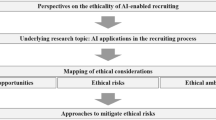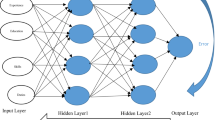Abstract
Although the term “industrial designer” is a well known title, the understanding of industrial design as a profession is still unclear, as evidenced by its application in the sector. In light of this, schools of industrial design should, despite the immense contributions to the sector made by their past graduates, continuously revise their curricula and review their deficiencies to provide a better correlation between their graduates and the needs of the industry. The aim of this study is to ascertain the role of the industrial designer from the perspective of industry by analyzing the specifications stated in job adverts for the recruitment of industrial designers. This study was conducted in three phases. In the first phase, an in-depth literature review was completed. The second phase was dedicated to the identification of the industrial designer in terms of education institutions, and to realize this, the curricula and course contents of industrial design undergraduate programs selected from ten universities in Turkey were analyzed. The third phase was directed towards identifying the profile of the industrial designer from the perspective of industry. Thus, the analyses were made through an investigation of the job opportunities available in the industrial design profession announced in seven major job search websites during the last 4 months of 2009. The results of this study are crucial for all parties involved as they help to satisfy the recruitment expectations of industrial design education, the industry, and the graduates.









Similar content being viewed by others
References
Ball, L. (2002). Preparing graduates in art and design to meet the challenges of working in the creative industries: a new model for work. Art, Design and Communication in Higher Education, 1(1), 10–24.
Boyarski, D. (1998). Education: Designing design education. Special Interest Group on Computer and Human Interaction bulletin, 30(3), 2.
Çırpanlı, T., & Er, H. A. (2006). Tasarımı KOBİ’lerle Buluşturmak: Türkiye ve İtalya’dan İki Üniversite Sanayi İşbirliği Projesi. In H. A. Er, Ş. Timur, L. N. Ece Arıburun, H. Hümanur Bağlı, A. Oğulcan İlhan, A. Zeki Turan, G. Turan, E. Küçüksayraç, & A. Ensici (Eds.), III. Ulusal Tasarım Kongresi: Türkiye’de Tasarımı Tartışmak Bildiri Kitabı (pp. 42–59). Istanbul: The Istanbul Technical University Press. Devlet Planlama Teşkilatı (DPT) 9. Kalkınma Planı. (2006). Mükerrer Resmî Gazete, Sayı: 26215.
Cooper, R., & Press, M. (1995). The design agenda: A guide to successful design management. UK: Wiley.
Er, H. A. (1993). The state of design: Towards an assessment of the development of industrial design in Turkey. METU Journal of Faculty of Architecture, 13(1–2), 31–51.
Er, H. A. (1998). Türkiye’de Endüstriyel Tasarım Eğitimi: Dün ve Bugüne Dair İki Saptama. (Ed.) H.A. Er and Ö. Er, Endüstriyel Tasarım Eğitimi: İTÜ Endüstriyel Tasarım Toplantıları 1998–1999 Bildirileri İTÜ Endüstri Ürünleri Tasarımı Bölümü, Nisan 2004, İstanbul.
Er, H. A., Korkut, F., & Er, Ö. (2003). US involvement in the development of design in the periphery: The Case History of Industrial Design Education in Turkey 1950s–1970s. Design Issues, 19(2), 17–35.
Erkarslan, O. (1998). Tasarımda Doktora Eğitimi Üzerine Alternatif Öneriler. (Ed.) H.A. Er and Ö. Er, Endüstriyel Tasarım Eğitimi: İTÜ Endüstriyel Tasarım Toplantıları 1998–1999 Bildirileri İTÜ Endüstri Ürünleri Tasarımı Bölümü, Nisan 2004, İstanbul.
Erkarslan, O. (2007). Inter-disciplinary characteristics of design profession: Bridging the gap between design education and industry. Proceedings Designtrain Congress Trailer I, pp. 213–218. Amsterdam, the Netherlands, 10–12 May 2007.
Erkarslan, O. (2010). Comparative analysis of master of industrial design education in Turkey. Design and Technology Education: An International Journal, 15(3), 41–57.
Evyapan, N., Korkut, F., & Hasdoğan, G. (2005). Implications of collaboration with industry for educational strategies in industrial design: the graduation project course (pp. 137–159). Ankara: METU, Faculty of Architecture Press.
Giard, J. (2000). Industrial design values: focus the toast, not the toaster. The 2000 IDSA National Education Conference (CD ROM).
ICSID (International Council of Societies of Industrial Design). (2003). Available from http://www.icsid.org/.
ICSID (International Council of Societies of Industrial Design). (2004). Available from http://www.icsid.org/.
IDSA (Industrial Designers Society of America) (2003). Available from http://www.idsa.org/.
Kaufmann, J. (1998). Why design education? Infrastructure issues affecting the future of industrial design education. The 1998 IDSA National Education Conference (CD ROM).
Kaya, N. A. (2008). Eskişehir Kent Merkezinde Kullanılan Dış Mekan Fitness Spor Aletlerinin Antropometrik Ölçülerinin Değerlendirilmesi ve Bir Tasarım Önerisi Geliştirilmesi. Anadolu Üniversitesi, Fen Bilimleri Enstitüsü, Endüstriyel Tasarım Anabilim Dalı, Yayımlanmamış Yüksek Lisans Tezi, Eskişehir.
Kındı, M. (2007). Türkiye’de Endüstriyel Tasarım İş Piyasası ve İstihdam Düzeyinde Temel Karakteristikleri. İstanbul Teknik Üniversitesi, Fen Bilimleri Enstitüsü, Endüstri Ürünleri Tasarımı Anabilim Dalı, Yayımlanmamış Yüksek Lisans Tezi, İstanbul.
Kolko, J. (2004). New Techniques in Industrial Design Education, in [online] the 6th international conference of the european academy of design proceedings, Available from: www.jonkolko.com/projectFiles/writing/ead06_id115_2.pdf, Accessed March 26, 2007.
Kusiak, A. (1992). Concurrent engineering automation, tools and techniques. USA: Wiley-Interscience.
Owen, C. L. (2004). What Is Design? Some Questions and Answers. Illinois Institute of Design white paper. Available from: http://www.id.iit.edu/141/documents/whatisdes.pdf. Accessed 30 March 2011.
Suel, A. B. (2006). Türk Endüstrisinde Firma İçi Çalışan Endüstriyel Tasarımcının Rolü: Üreticilerin ve Tasarımcıların Algıları. Orta Doğu Teknik Üniversitesi, Fen Bilimleri Enstitüsü, Endüstri Ürünleri Tasarımı Anabilim Dalı, Yayımlanmamış Yüksek Lisans Tezi, Ankara.
Vanchan, V., & Macpherson, A. (2008). The recent growth performance of US firms in the industrial design sector: An exploratory study. Industry and Innovation, 15(1), 1–17.
Wang, K. (2008). Research of the recruiting qualifications of the ID profession and their implication in ID education.Computer-Aided Industrial Design and Conceptual Design, CAID/CD 2008, Kunming, China, pp. 851–854.
Yang, M. Y., You, M., & Chen, F. C. (2005). Competencies and qualifications for industrial design jobs. Implications for design practice, education, and student career guidence. Design Studies, 26(2), 155–189.
Yeh, W. D. (2003). The demand and the evaluation of industrial design profession from the industries. The 6th. Asian Design Conference (CD ROM).
Author information
Authors and Affiliations
Corresponding author
Rights and permissions
About this article
Cite this article
Erkarslan, O., Kaya, N.A. & Dilek, O. Comparative analysis of recruitment qualifications of industrial designers in Turkey through undergraduate education programs and online recruitment resources. Int J Technol Des Educ 23, 129–145 (2013). https://doi.org/10.1007/s10798-011-9164-6
Published:
Issue Date:
DOI: https://doi.org/10.1007/s10798-011-9164-6




